Review: HTC EVO 4G LTE for Sprint
May 14, 2012, 5:24 PM by Eric M. Zeman
The HTC EVO 4G LTE carries the EVO brand forward for Sprint, and makes the huge jump from WiMax to LTE for 4G tech. Phone Scoop's full report details what's great and not-so-great about the EVO 4G LTE.
Form
Is It Your Type?
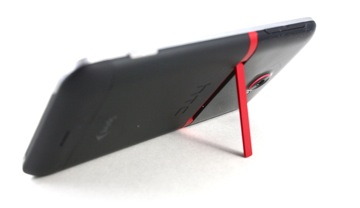
The HTC EVO 4G LTE is Sprint's version of the HTC One X. The EVO differs a lot from the other versions on the outside but only a little bit on the inside, and this is one instance where the real beauty lies on the inside. The EVO 4G LTE will be the King Kong super phone for Sprint throughout 2012 — but only after Sprint's planned LTE 4G network gets off the ground. Until LTE launches, the EVO is just another 3G smartphone.
Body
Sprint wanted its variant of the One X to stand apart from other versions. I totally understand that. There's nothing wrong with wanting to offer a unique product. Unique isn't always good, though, and I think the design choices made by Sprint and HTC on this device border on chaotic.
From afar, the phone looks good. It's a black slab that's broken up by red and silver styling cues. Usually this palette mixes well. Hold it close and the stylings look forced. The international and AT&T variants of the One X are housed in a single piece of polycarbonate. The polycarbonate is smooth, with rounded edges, and is a pleasure to hold. The plastics, metals, and other materials of the EVO aren't pleasant to hold at all.
First, the aluminum. There's a metallic band that loops the side, top, and bottom edges of the EVO. Brushed metal almost always looks and feels good, but this band has some seriously sharp edges to it. The edges feel hard against the skin when the phone is gripped tightly. The benefit is that the EVO is strong as heck.
There are no less than four different materials used on the back of the phone. At the top, there's a cheap-looking, glossy piece of black plastic. This piece of plastic can be removed to access the microSD card slot. The cover fits snugly. Below it, there's a red metallic band (Verizon's colors, anyone?) that also serves as the kickstand. The kickstand is easy enough to remove with the help of your thumbnail, and the phone can be positioned on either the left or right side with the kickstand open. Then there's a soft-touch surface that takes up perhaps 50% of the back of the EVO. It's grippy feeling. Finally, the last 1.5 centimeters of the back surface (where the antennas are located) is covered with a slightly different soft-touch surface. The overall look — with multiple horizontal lines running across the surface — is way too busy for me, and completely loses the sex appeal of the polycarbonate One X.
The front of the EVO has a slight lip that rings the display. This lip is meant to help protect the display when it is placed on a flat surface. I totally understand the utility in such a design choice, but it gives the EVO a hard edge that simply doesn't feel good in the palm. It's more or less the complete opposite of the polycarbonate One X in overall feel.
It's still thin enough to easily slip in and out of pockets, and the weight is nothing to be concerned about.
What little portions of the EVO's front surface aren't consumed by the display house the speaker grill and user-facing camera up top, and three Android capacitive controls at the bottom. As with other variants of the One X, the capacitive buttons offer mild feedback. The microUSB port is on the left edge, and the volume toggle is on the right edge. The volume toggle has a decent feel to it, but was a bit sticky. It didn't spring back quickly enough.
The one major hardware advantage the EVO has over other One X variants is the dedicated camera button. The button is on the right edge, and has absolutely fantastic action to it. It's a two-stage button, and both stages are well defined. What's dumb is that pressing the button won't unlock the phone and take you to the camera. You have to use the lock-screen software shortcut to reach the camera or unock the screen first. Only *then* can you use the hardware button. Stupid. HTC knows better than that.
The 3.5mm headset jack and lock button are on top. The lock button is improved compared to other variants of the One X. It has better travel and feedback, and is easier to find.
From my perspective, the design changes take away from HTC's original device and serve no discernible purpose. You may love them. I don't.
The Three S's
Screen
The EVO has a 4.7-inch Super LCD with 1280 x 720 pixels. That makes it an HD display, and a bright and colorful one at that. The pixel density is tight enough that picking out individual pixels is difficult. Everything rendered on the display is smooth and free of distracting rough edges. I used the device outside for an entire weekend and had no problem reading the display in direct sunlight. All the menus, screens, and apps were perfectly visible. It is a really, really good display.
Signal
The EVO will be one of the first few devices able to access Sprint's LTE network. That network is not yet available, and won't be for another month or two. That means we were only able to test the EVO's CDMA-EVDO Rev. A 3G radio (heh, yep, they still exist). To put it bluntly, it stinks. Sprint's 3G network isn't nearly as strong as Verizon's (which uses the same technology) and badly lags the speeds available to devices on T-Mobile's HSPA+ network and AT&T's HSPA+/LTE networks.
The phone itself performed on par with other Sprint devices I've tested in the metropolitan New York area. In my office, the EVO collected two bars of coverage and lost the network entirely in my basement (that means no data, no voice calls). When under strong network availability, the EVO did just fine connecting voice calls, but wireless data was never better than 1Mbps on the download and averaged closer to 500Kbps. Calls never dropped, but data often slowed to a temper-tantrum-erupting crawl.
Sound
Call quality with the EVO was not the greatest I've experienced. There was static and interference across the board on all phone calls, though it wasn't terrible by any stretch. Sprint is set to debut HD Voice later this year, which will dramatically improve voice quality. The one bummer is that it relies on 1X Advanced to work, which will have a very limited footprint over the next few months. Sprint demoed this feature for us at CTIA, and it was quite impressive. Without HD Voice, the earpiece was just barely adequate with respect to volume. When set all the way up and pressed hard to your ear, you'll be able to hear calls in most environments — even noisy ones. Those with whom I spoke that I sounded good, and reported a clean signal coming from my end of the conversation. If the volume is set to anything less, and you'll have trouble. The speakerphone isn't so good. You can hear all the same interference, and the volume oomph just isn't there. It's too quiet. You'll be able to use it in a quiet office or hotel room no problem, but any place that has even a modicum of noise will overpower the speakerphone. Ringers and alert tones are loud enough, but the vibrate alert is way too weak. Not once did the vibrate alert actually alert me to anything.
Battery
Since we tested the EVO under 3G-only conditions, battery life was quite good. We expect this to change once Sprint's LTE network launches. With the 3G and Wi-Fi radios on, I easily got more than a full day of life from the EVO. The question is just how much will Sprint's LTE network impact battery life?
Basics
Menus
The EVO runs Android 4.0 Ice Cream Sandwich with HTC Sense 4. The system software and user interface are identical to that of the AT&T One X. Anyone who's ever picked up an HTC Sense device will feel at home.
The lock screen on the EVO offers a handful of customizable shortcuts. You can set up to four apps/actions on the lock screen that will launch when you drag them down to the ring at the bottom of the screen. The defaults are phone, mail, messages, and camera, but you can adjust these at will. With Sense 4.0 you can have a camera shortcut and a passcode at the same time. I found this to be good for security when used with a pattern unlock.
The central home screen panels all have a permanent dock at the bottom of the screen that holds five app shortcuts — the same four as the lock screen, plus the main app menu. These can be customized if you wish.
There are three buttons below the display: Back, Home, Multitask. The first two are self-explanatory. Pressing the multitask button reveals a graphical listing of all the recently used applications. The hardware menu button has been removed entirely in Android 4.0, which is annoying, but that's mostly Google's fault.
HTC has jazzed up the appearance of Android 4.0, but there are so many options in Settings, it takes a little while to learn where everything is.
The drop-down notification shade collects notification as before, but with Android 4.0 you can now dismiss individual notifications by swiping them sideways.
Applications are laid out via grids on the EVO. Swipe the pages to the left and you'll eventually jump from a list of all the apps to a list of all the widgets that are available. The widget menu lets you see what the widget looks like and tells you how big it is.
Last, on the performance front, the dual-core 1.5GHz Qualcomm Snapdragon S4 is an impressive beast. Everything about the EVO is blazing fast. Screens transition in a blink, apps open in an instant, and the camera was lightning-bolt quick. I threw a number of games at it, and the EVO didn't blink. It tackled all tasks with gusto.
Calls/Contacts
The calling and contact software of Sense 4.0 borrow heavily from how HTC arranged things in earlier versions of Sense. The phone app defaults to the dialer when opened, with a list of recent calls and favorite contacts above the dialer. Touch any of the contacts above the dialer, and the dialer goes away and you can see an expanded view of your contact list.
Perhaps the best part of HTC's customizations to the phone software are the gesture-based actions. For example, if the phone rings, turn it over to silence the ringer. Or, if you pick it up, the ringer won't silence completely, but will drop significantly in volume. You can also set the EVO to recognize when it is in your pocket so that it will automatically vibrate as well as ring.
As for widgets, they are plentiful. You can set direct dial shortcuts to the home screen, and there are three different styles of widgets for your favorite set of contacts. I particularly liked the contact widgets, and found them to be useful for organizing my contact groups.
Messaging
The EVO offers the basic toolset from Android, such as Gmail, email, SMS, Google Talk, and Google Voice. These are all fine applications that continue to be useful for composing all sorts of messages. There aren't any other IM apps, so Google Talk is your only option out of the box.
In terms of social networking, the EVO offers integration with Twitter and Facebook within the OS. Sign into your social networking account and you can do things such as share photos, or messages from within other applications more easily. Twitter and Facebook are also both preloaded on the EVO as individual apps.
Other messaging and social networking tools include Google+ and Google+ Messenger, Latitude, and FriendStream. Each has its own widget or home screen shortcut that makes the app/service easier to access and use directly from the home screen panels.
What I like most about all of these is the sheer volume of options and ease with which most of them work. It takes only a few taps to create posts or messages from pretty much anywhere in the operating system.
Extras
Media
With respect to music, the EVO has an FM radio, the Google Music app, and a bare bones media player app. The Google Play Store is on board if you want to purchase tracks directly from the handset, and of course you can download Amazon MP3, Slacker, Pandora, or other streaming music app from the Google Play Store.
On the video front, the EVO includes the stock YouTube app, HTC Watch, and a simple video player. HTC Watch is HTC's movie rental store. You can also download video content from the Google Play Store. The selection between HTC Watch and Google Play is about the same, as are the prices.
Thanks to the Beats Audio integration, music and video sound great through the EVO. I used several different sets of earbuds/headphones and was impressed with the quality. What I really like is that the Beats software has been buried deeper into the OS, and works with ALL media apps on the device.
MediaLink
One thing we didn't discuss in the other One X reviews is the HTC MediaLink. Sprint is betting on the MediaLink and its appeal to consumers. The MediaLink uses WiFi to stream media from the handset to a receiver (the actual MediaLink). The receiver sits near your home theater and plugs directly into a TV or your receiver via HDMI. This lets you watch movies, YouTube videos, slide shows, as well as listen to music all on your big home theater system. MediaLink is pretty easy to set up, and once you do, it's really neat.
Basically, you place three fingers on the phone screen and swipe up. This opens the MediaLink app (multitouch gestures FTW!) If you're within range of your MediaLink device, it automatically connects and starts to stream whatever is on the screen. Make sure to turn your TV on first so you don't miss the first few minutes of your video.
I found it to work well. The initial set-up is the biggest roadblock, but once you are past that, it works very well. Video quality on my HDTV was good, but not great. Sound quality wasn't CD-level, but it was better than streaming Pandora.
Camera
Camera
The EVO's camera is incredibly fast, easy to use, and offers plenty of advanced features.
Even though there is a dedicated camera button, you still have to open the camera from a home screen shortcut or the main app menu. It opens very quickly. The controls are laid out simply. On the top-left corner you'll see the flash controls. Rather than obstruct the screen with a drop-down menu, it simple cycles between on, auto, and off every time you press it. This is a faster way to set the flash.
There's a gear icon below it that opens the full settings menu. You can adjust the ISO, white balance, and so on. There are some really cool advanced features, such as continuous shooting and video stabilization. You can also control the settings of the user-facing camera, which is pretty rare.
The continuous shooting mode lets you capture bursts of up to 20 shots. It is meant to help you get that perfect shot when you're not exactly sure when that perfect shot is going to occur, like in sports, for example.
Below the gear icon in the lower-left corner, there's an A. Press this to access the different types of capture and scene modes, such as HDR, panorama, portrait, macro, and so on. It also features a slow-motion video option for the artistic videographer.
On the right side of the viewfinder, there are four tools. The top-most tool is used to instantly apply effects to shots as you take them, such as distortion, vignetting, sepia, vintage, and the like.
The software shutter button is an interesting thing. The EVO has a dual-shutter button. The top half shoots still images, and the lower half captures video. The result is you never have to switch between camera mode or video mode; you just choose the shutter button that takes pictures, or the one that shoots video. The downside is that it's all too easy to accidentally take a picture when you mean to take video, and vice versa. The neat feature is that you can take still images while recording video (without interrupting the video.)
Of course, if you want more control, the two-stage camera key really gives you a feel for focusing an image before releasing the shutter.
It's a powerful camera, and performs flawlessly.
Gallery
The main view of the gallery shows stacks of photos, images, and videos floating on the screen. They are broken down into groupings such as Camera Shots, All Photos, All Videos, and Screenshots. At the top of the screen, you'll see a drop-down menu that says "Albums." Press it, and you'll automatically see a list of all the photo albums associated with the phone and your online accounts, such as Facebook, Flickr, DropBox, or Picasa.
You can of course share photos through any social network/messaging service you want. You can set the images as your wallpaper, print it, see the photo's location on a map, etc.
Editing features are very limited. You can crop, rotate, or apply effects. That's it. The effects run the typical selection, such as black & white, antique, etc. There is no third-party photo-editing software, but there is a video editor. It lets you piece together videos you've captured with the phone into simple projects.
Photos/Video
Photos
HTC takes the image quality of the EVO seriously. So does Sprint. In fact, Sprint and HTC took a number of journalists on a photo-taking expedition with the EVO in tow during the CTIA Wireless trade show in New Orleans (see the cemetery below). The results are good, as I expected them to be. Aside from being fast-as-hell, the EVO takes pictures that are in focus, well exposed, properly balanced, and good-looking. The flsh does its job well, and the easy controls make sure the flash goes off when you want it to. You'll be happy to share these images.
Video
The video coming from the EVO is also good, but just short of excellent. Focus and exposure are great, as is color representation, but I thought the video showed a bit too much noise. But this is being really picky. For the most part, you'll be pleased with the video results achieved with the EVO.
Browser/Customize
Browser
The Android 4.0 browser is decent enough, but Chrome Beta for Android is better. Whichever browser is your particular flavor of poison, be prepared for some slow browsing. Sprint's 3G network may have felt zippy back in the day, but it's painfully slow compared to the competing networks of 2012. Think I'm kidding? The fastest peak download speed I achieved over 3G with the HTC EVO was 0.94Mbps down. The average download was closer to 500Kbps. The LTE One X for AT&T, by way of comparison, peaked at 44Mbps down and averaged 21Mbps. Sprint's 3G network is a joke. Keep in mind, both the EVO 4G LTE and One X have the same processor, same RAM, same display, and same software. Sprint's 3G network is slow; that's all there is to it. Until Sprint gets around to launching LTE, be prepared to keep the Wi-Fi radio on and map out where the local free hotspots are.
Customize
HTC's Sense 4.0 lets you fine-tune nearly every facet of the EVO's behavior and appearance. In fact, it probably offers too much flexibility.
The modifications that matter most to most people, such as scenes, skins, wallpapers, and ringtones, are a web of interlaced and related settings that take some time to learn to use properly. (Was that a skin or a theme that changed my wallpaper?) The most useful tool of the entire UI is the one that lets you customize the lock screen shortcuts and widgets.
Extras
Apps
Color me surprised. Sprint is taking a new tack with its high-end Android devices moving forward. There's pretty much NO bloatware on the EVO. No NASCAR, no NFL, no Sprint iD, no Sprint TV; none of that garbage. Instead, you'll find the Sprint Zone, a single place on the device that owners can browse to download Sprint-branded apps and services if he or she so chooses. The Sprint Zone also doubles as the portal for controlling user accounts, managing features, paying bills, support, and so on. Good stuff, Sprint. I'm pleased to see this change in direction.
Bluetooth
The EVO's Bluetooth radio works perfectly. It paired with every device I could find. Phone calls were somewhat crackly when sent through my car's speaker. Music sounded very good when sent to stereo Bluetooth headphones. I had no issues pushing files to/from the EVO.
Clock
HTC went overboard with the clock. There are a slew of clock widgets, any of which can be chosen as the home screen clock. The clock on the lock screen, however, is a smallish, digital job that is positioned at the top of the screen. It is readable at an arm's length, but can be hard to see in bright sunlight if you've chosen the wrong scene/skin/wallpaper.
GPS
The GPS worked flawlessly. The EVO's GPS radio was able to lock on my position in less than 10 seconds, and was accurate to within about 25 feet. Paired with Google Maps, which is the only navigation tool on the EVO, the location capabilities are excellent. The one hiccup I encountered was network access. Despite solid GPS performance and processor power, a slow network connection could put the kibosh on navigation features. I had the network hang on me once, which wrecked the timeliness of the app's map.
Wallet
Google Wallet is installed on the EVO, though users can ignore it if they wish. If you want to use it, though, it takes but a moment to set up an account through Google. Once the account is enabled, the EVO can be used for tap-and-go payments at a growing number of retailers.
Video
Wrap-Up
To me, the HTC EVO 4G LTE for Sprint presents a conundrum. HTC and Sprint took everything I liked about the One X design and killed it. They kept all the important features and capabilities the same, though. The guts of the device are mostly the same, the software is identical, and the overall performance and daily user experience are great.
Sprint is obviously hoping the owners of the original EVO, which went on sale in June 2010, will go straight from that EVO to this EVO. The original EVO uses WiMax, which is still operational. The EVO 4G LTE uses LTE, which won't launch until later this year. Even when it does, it will only grace six cities at the start, and won't ramp up to cover 120 million people until the end of the year.
The question is, do you upgrade now or wait for LTE? If you've come to rely on the faster mobile broadband speeds available to your WiMax device, then perhaps you should stick with it until LTE is available in your neck of the woods. Downgrading mobile broadband from WiMax to EVDO could be jarring and unpleasant to some users.
However, if network speeds aren't that important to you and you're pining for some new hardware to love, the EVO 4G LTE is the (near) total package. I don't care much for the design, but that's just me. Maybe it's right up your alley. The EVO 4G LTE is a fantastic phone, and the best in Sprint's line-up at the moment. It'll be that much better once LTE is available.

Comments
The "one" major hardware advantage???
Say It's Not So.
As an original Evo owner since day one, I have not been more happier with a phone. It has performed excellently and kept up with the Jones' for the last two years. However, time has taken a toll on the charging port and I need to retire the old girl. I have waited for HTC's new offering of the HTC LTE.
I'm sorry Eric, but I am taken back by your review. It appears you're more angry at Sprint's 3G network and lack of LTE and have indirectly taken it out on the device by telling people to wait. I am sure many others are in a similar position as myself of hardware issues that have been waiting.
I didn't have WiMAX when the Evo came out and I will not have LTE as this ne...
(continues)
(continues)
(continues)
Yes, the mobile broadband speeds are outright pathetic, and that's Sprint's fault, not HTC's. The point I was trying to make is that for some users, fas...
(continues)
It's mind boggling...
(continues)
The LTE network rollout - like any new cellular network - is a massive undertaking that takes time. They're actually moving pretty quickly with it, assuming they stick to the schedule.
If they phones are ready now, why n...
(continues)
HD Voice
It says it will work on CDMA 1x Advanced there, but it also says it's not a feature you'll get right out the door with the phone. Maybe it's a feature that they're not going to enable until a...
(continues)
What's funny is….
(continues)


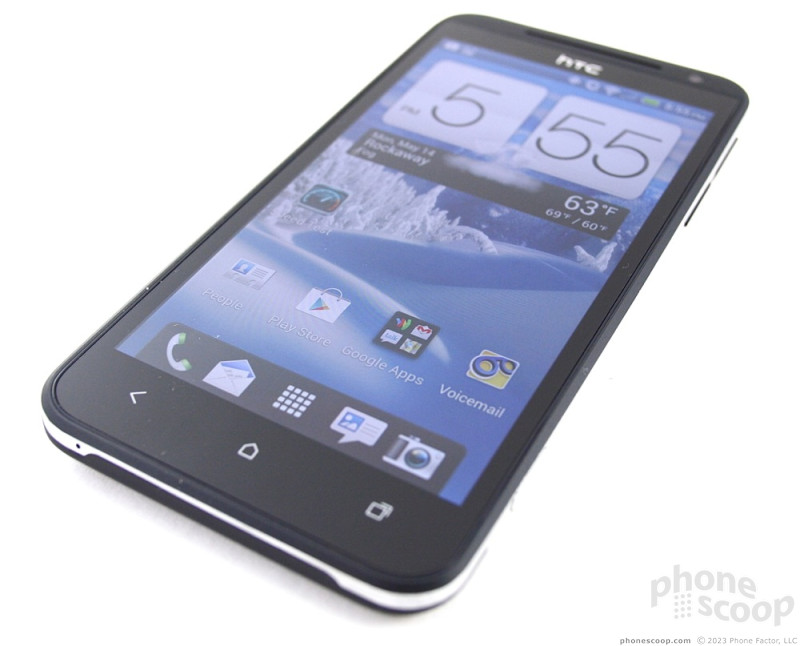


















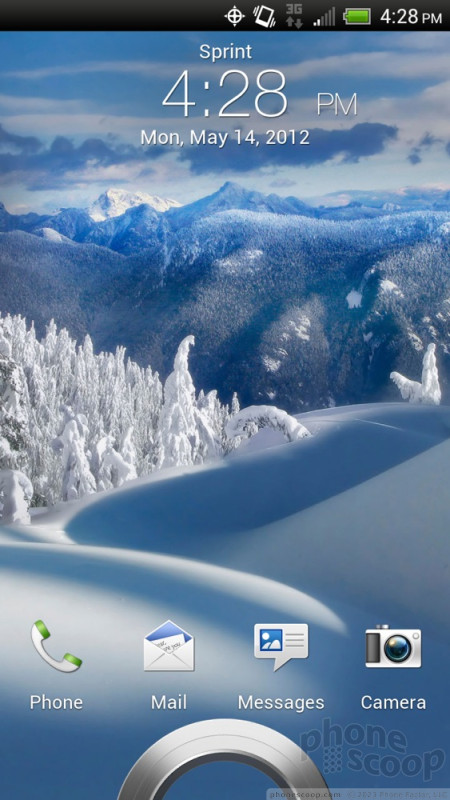





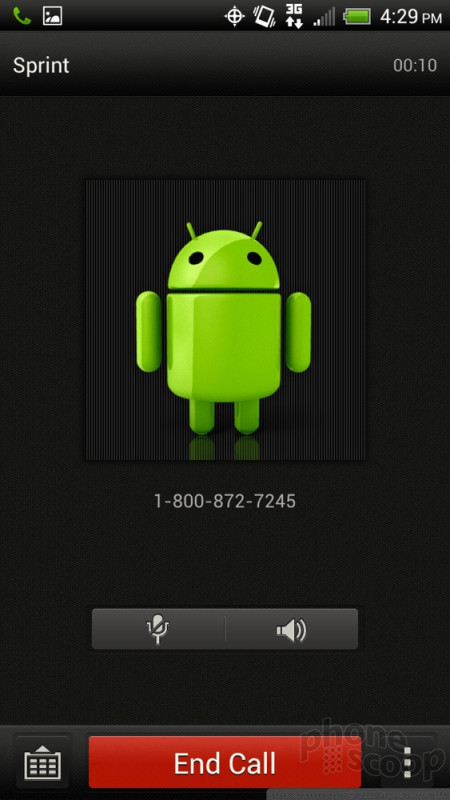




















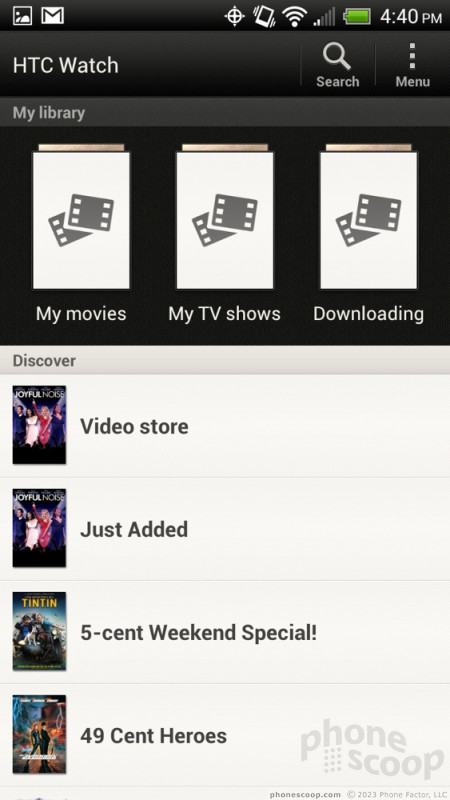






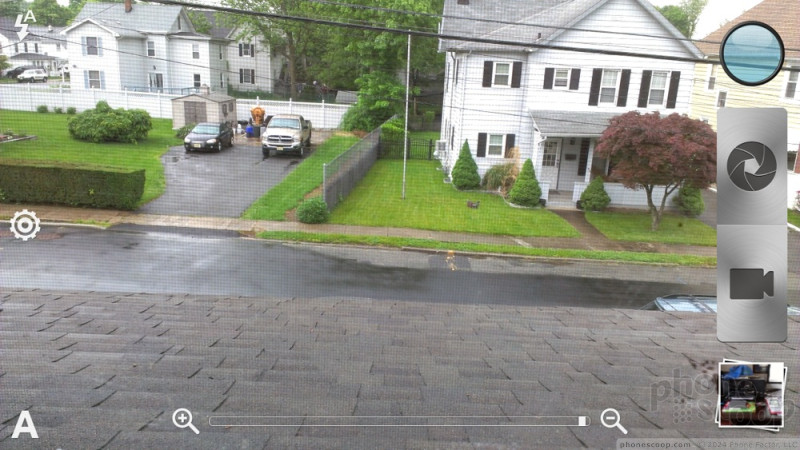





















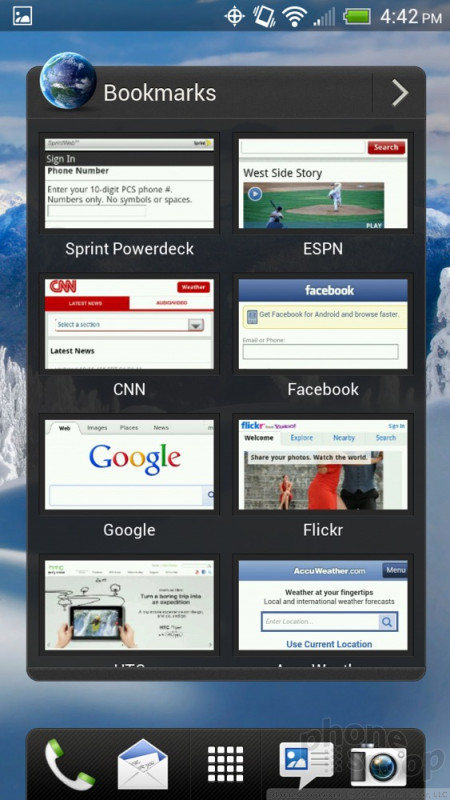






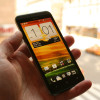 Hands-On: HTC EVO 4G LTE
Hands-On: HTC EVO 4G LTE
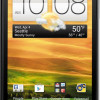 Sprint's Latest EVO from HTC Adds 4G LTE, Brings Back Kickstand
Sprint's Latest EVO from HTC Adds 4G LTE, Brings Back Kickstand
 HTC EVO 4G LTE
HTC EVO 4G LTE



